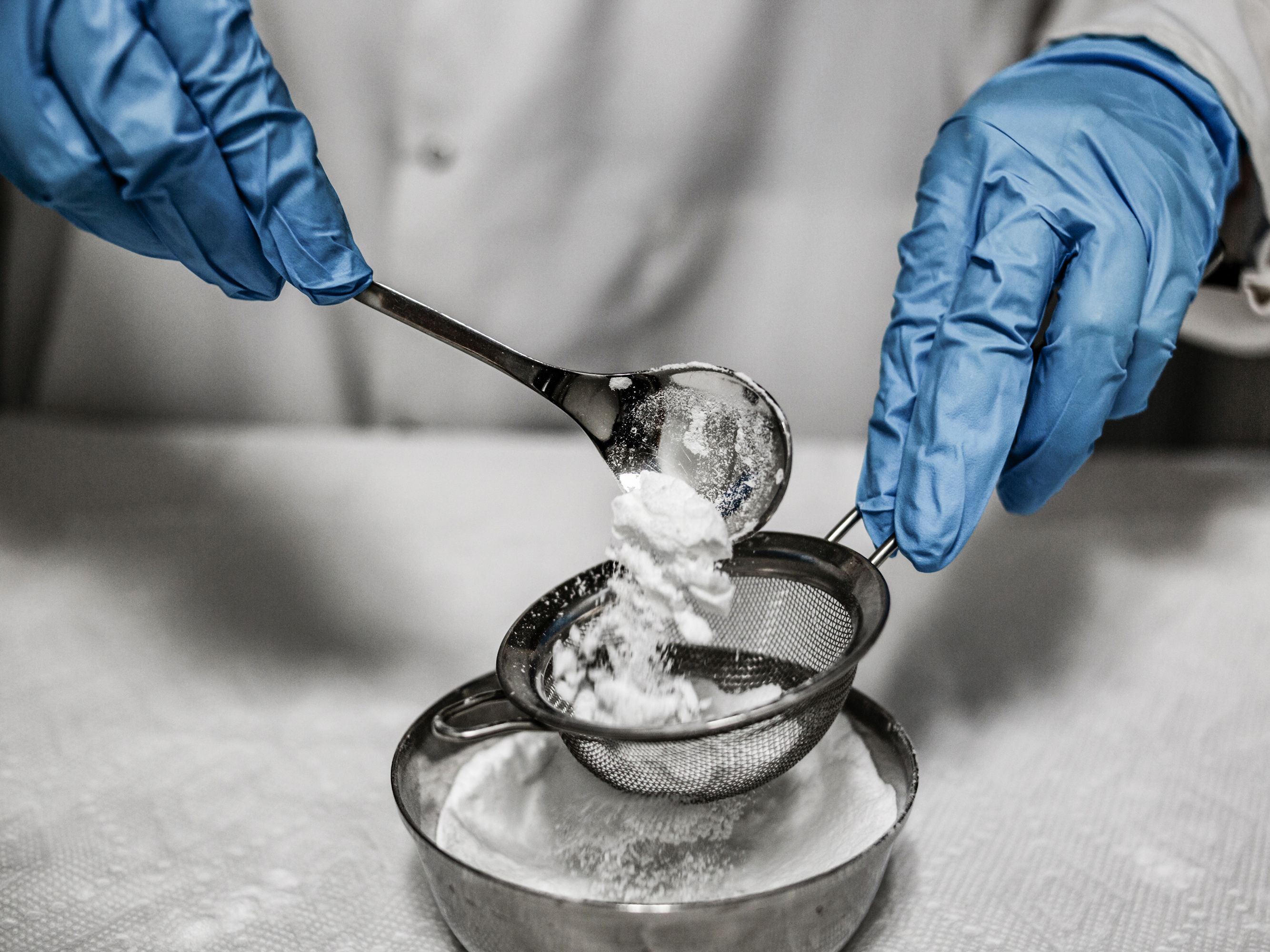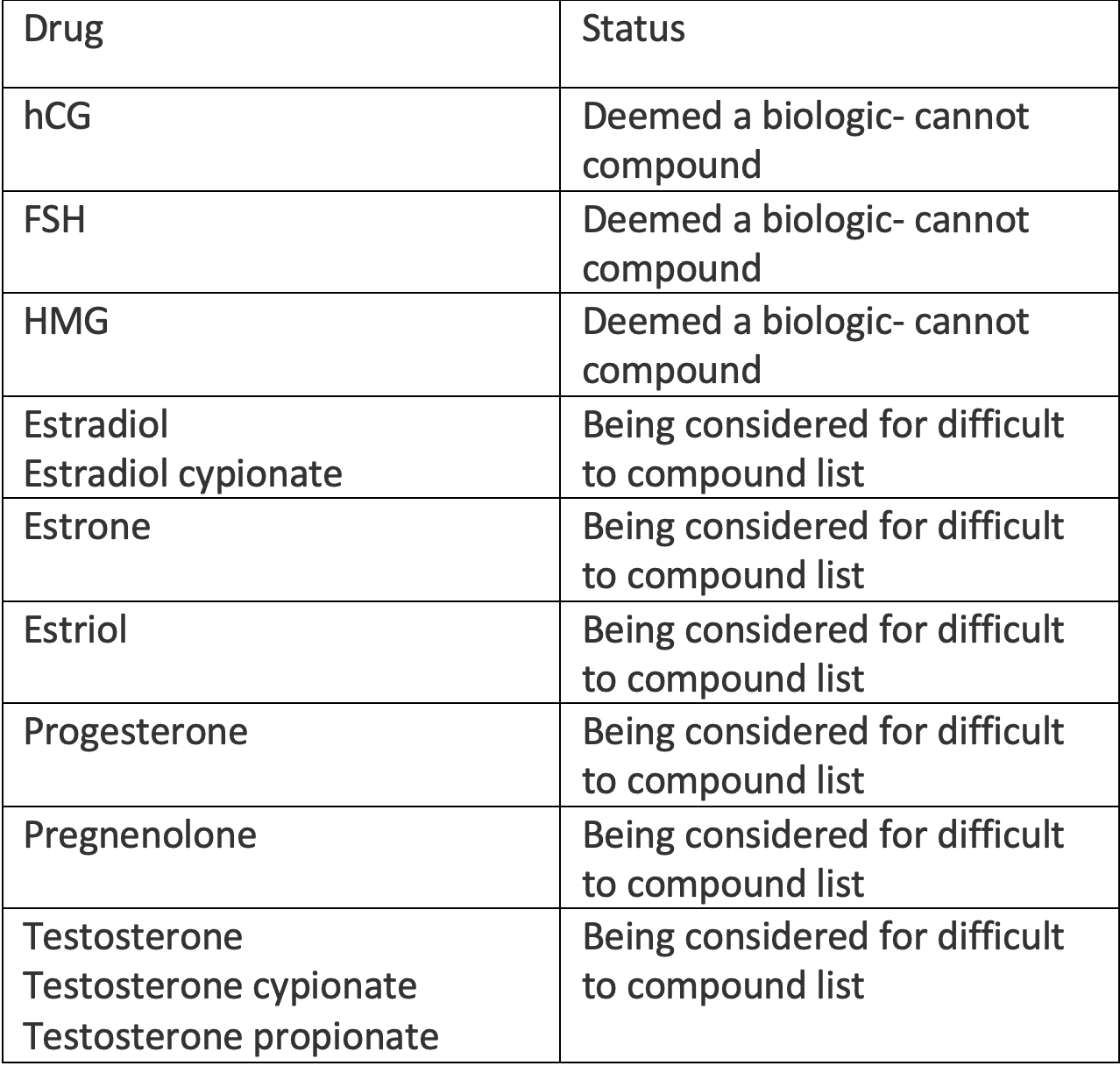Feature
Article
Updates on 503A Compounding: The Impact of Drug Shortages
The FDA’s temporary Guidance for 503A compounding of shortage drugs was meant to be temporary and withdrawn once COVID-19 ended.
In the second part of our series on 503A compounding, we review the current state of compounding certain drugs that are on the shortage list, compounding “essentially a copy,” as well as compounding peptides, DTE, semaglutide, β lactams, ibuprofen suspension, and bHRT. We will also explore the proposed legislation that aims to fill regulatory gaps.
Shortage List
The FDA’s temporary Guidance for 503A compounding of shortage drugs was meant to be temporary, just for hospitalized patients, and withdrawn once COVID-19 is over.1
Credit: Polina - stock.adobe.com

The guidance states that 503A compounders are permitted to compound a drug that is “essentially a copy of a commercially available drug” or may provide a drug to a hospital without a patient-specific prescription if the conditions are met.
The drug must be on a list of products used for hospitalized patients. The list, last updated in December 2021, includes about a dozen drugs. Of note, 503As that compound these drugs have additional requirements placed on them, such as reporting adverse drug events within 15 days and sending notification to the state board of pharmacy that they are compounding these specific drugs.
The FDA 506(E) shortage list is a much larger and ever-changing list of drugs in short supply. The provision of 503A that applies to compounding a drug product that is “essentially a copy of a commercially available drug” does not apply to compounding a drug on the shortage list because the FDA does not consider drugs on the list to be “commercially available.”
Although these drugs can be compounded by a 503A compounding pharmacy, they must be pursuant to a patient-specific prescription. The proposed legislation would fill the regulatory gap for compounding shortage drugs by 503A compounders that are not patient-specific and expand the list to include not just the FDA shortage list but also the ASHP Shortage list, which is more local/regional.2
The legislation would require prescribers to indicate that they cannot obtain the compound from a 503B facility and additionally requires adverse drug reaction reporting.
Once these drugs come off the shortage list, there is a 60-day grace period for compounding where the FDA has indicated it will exercise enforcement discretion. However, that grace period is only applicable to 503B facilities where large orders may be in process when the drug is taken off the shortage list. There is no such grace period language for 503A compounding pharmacies.
Compounding Specific Shortage Drugs
In January 2023, the FDA issued a guidance permitting 503B outsourcing facilities to temporarily compound ibuprofen suspension at the specific concentration of 100 mg/5 mL.3 But the guidance mentions in the FAQs that 503A compounders can compound acetaminophen and ibuprofen if the compounding is not done “regularly or in inordinate amounts,” which was defined by the FDA in another guidance as more than 4 units. Also, all other 503A conditions would have to be met, e.g., patient-specific prescription.
In November 2022, the FDA released a guidance outlining its enforcement discretion policy for the compounding of certain β lactams, such as amoxicillin powder for oral suspension, which is on shortage caused by increased demand.4 Some manufacturers have placed limits on how much amoxicillin that pharmacies can purchase at a given time. The guidance addresses the inability of 503A compounders to prepare compounded versions because of the requirement for “complete and comprehensive separation from non-β lactam products.”
Detailed are steps to avoid cross contamination, such as compounding from tablets and capsules instead of bulk powder, using dedicated or disposable equipment, and wetting by trituration to reduce dust.
Syringes are being compounded for semaglutide and other twin creatins (dual GLP-1 and GIP receptor agonists) such as tirzepatide. Both drugs are currently on the FDA shortage list due to their popularity for both diabetes and weight loss, as a brand of semaglutide is FDA-approved for weight loss and tirzepatide is currently pending FDA approval for weight loss.
Because semaglutide is an FDA approved drug and is on the shortage list, it can be compounded by 503A compounders for patient-specific prescriptions. The issue, however, is that often what is being compounded is not semaglutide, but the sodium salt that is not FDA-approved, does not have a USP/NF monograph, and is not on the bulks list nor on the shortage list. Therefore, the sodium salt cannot be compounded either alone or in combination with supplements.
Compounding Peptides, DTE, and bHRT
Since 2020, the FDA’s placed restrictions on compounding peptides pursuant to the Biologics Price Competition & Innovation Act (BPCIA).5 Peptides with greater than 40 amino acids are considered proteins and biologics, which cannot be compounded unless the pharmacy has a biologics license application (BLA).
Because 503A compounders cannot acquire a BLA, they are effectively banned from compounding biologics. Peptides with less than 40 amino acids and FDA-approved peptides may be compounded.
Most peptides, even those not considered biologics with less than 40 amino acids, do not meet the legal requirements for compounding, i.e., USP/NF monograph, ingredient in an FDA-approved drug or on the bulks list. Some are FDA-approved and can be compounded; however, it is extremely important to be certain what you are asked to compound falls within the permitted to compound category. Additionally, mixing, diluting and repackaging is permitted.6
It appears that the prohibition on peptide compounding is being selectively enforced, with the FDA targeting high doses, products resulting in adverse effects, or touting COVID-19 indications. There have been very few warning letters pertaining to compounding of peptides since 2020.
Because desiccated thyroid extract (DTE) has a USP/NF monograph, 503A pharmacies have been compounding it. The FDA recently classified DTE as a biologic, which means it cannot be compounded, and they sent letters to that effect to the National Association of Boards of Pharmacy (NABP).7
The classification was based on the inactive ingredient thyroglobin; however, a drug product that contains a protein only as an inactive ingredient is not a biologic based on the statutory definition of a biologic (e.g., drug products formulated with traces of human albumin are not considered biologics). A biologic cannot be classified based on an inactive ingredient that does not even appear in the USP monograph or commercial product labeling.
Although it appears that the Notice and Comment process proscribed by the Administrative Procedures Act may have been circumvented here, the FDA recently stated it will exercise enforcement discretion for DTE compounding.
The FDA is currently considering placing 11 hormones used in Compounded Bioidentical Hormone Therapy (cBHT) on a “difficult to compound list,” effectively banning compounding of these ingredients.8 Already banned from compounding are hormones recently classified as biologics, which includes such fertility compounds as HCG, FSH and HMG.
The FDA tried unsuccessfully in 2008 and 2018 to ban bHRT. Grass roots efforts to preserve patient access to bHRT involve a legislative, regulatory, and legal multi-prong approach. The Table presents the list of hormones that would be prohibited from compounding.
Table. Status of Hormone Compounding

There certainly many legal and regulatory developments that present opportunities and challenges for pharmacy compounders. Clearly, the pharmacy compounding landscape changes often.
About the Author
Martha M. Rumore, PharmD, Esq, MS, LLM, FAPhA, is senior counsel at Frier Levitt.
References
1. Guidance for Industry. Temporary Policy for 503A for Hospitalized Patients During COVID Emergency. Center for Drug Evaluation & Research (CDER). FDA. May 21, 2021.
2. HR 167. Patient Access to Urgent Use Pharmacy Compounding Act of 2023. (first introduced in 2021 and reintroduced Jan. 9, 2023).
3. Guidance for Industry. Compounding Certain Ibuprofen Oral Suspension Products Under Section 503B of the Federal Food , Drug, and Cosmetic Act. CDER. FDA. Jan 2023.
4. Immediately In Effect Guidance for Industry. Compounding Certain Beta-lactam Products in Shortage Under Section 503A of the Federal Food, Drug, and Cosmetic Act. CDER. FDA. Nov. 2022.
5. Pub. L. 111-148.
6. FDA Guidance. Mixing, Diluting, or Repackaging Biological Products Outside the Scope of an Approved BLA. CDER. FDA. Jan. 2018.
7. Letter from Shannon Glueck, Branch Chief, Office of Compounding and Compliance, FDA to Lemrey “Al” Carter, Executive Director, NABP, dated Sept. 16, 2022.
8. The ‘difficult to compound list’ is a list of drug products that present demonstratable difficulties for compounding based on 6 criteria that FDA developed.
Newsletter
Stay informed on drug updates, treatment guidelines, and pharmacy practice trends—subscribe to Pharmacy Times for weekly clinical insights.






